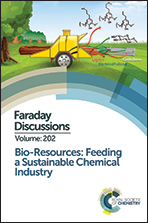The influence of the explosive decompression in steam-explosion pretreatment on the enzymatic digestibility of different biomasses†
Abstract
For the production of second generation biofuels from lignocellulosic biomass, pretreatment of the biomass feedstock is necessary to overcome its recalcitrance in order to gain fermentable sugars. Due to many reasons, steam-explosion pretreatment is currently the most commonly used pretreatment method for lignocellulosic biomass on a commercial scale [S. Brethauer and M. H. Studer, CHIMIA, 2015, 69, 572–581]. In contrast to others, we showed that the explosive decompression at the end of this pretreatment step can have a positive influence on the enzymatic digestibility of softwood, especially in combination with high enzyme dosages [T. Pielhop, et al., Biotechnology for Biofuels, 2016, 9, 152]. In this study, the influence of the explosive decompression on the enzymatic digestibility of hardwood and herbaceous plants was systematically studied. Beech and corn stover were pretreated under different pretreatment conditions and enzymatically hydrolysed with different enzyme dosages. The maximum enhancement of the digestibility of corn stover was 16.53% after a 2.5 min pretreatment step at 15 barg steam pressure. For beech, a maximum relative enhancement of 58.29% after a 10 min pretreatment step at 15 barg steam pressure could be reached. With this, we show that the explosive decompression can also enhance the enzymatic cellulose digestibility of hardwood and herbaceous plants.
- This article is part of the themed collection: Bio-resources: feeding a sustainable chemical industry


 Please wait while we load your content...
Please wait while we load your content...